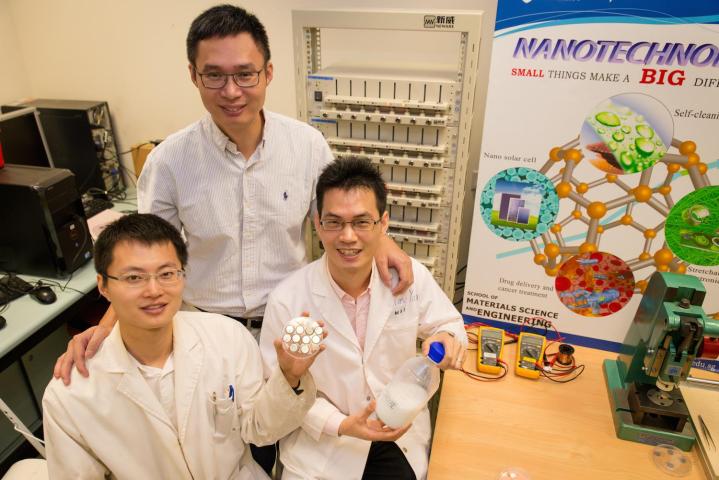
The ultra-fast batteries can charge 70 percent in only two minutes and don’t need to be replaced every few years. The batteries will work for more than 20 years, a timeframe that’s nearly 10 times longer than the typical lithium-ion battery.
NTU researchers used a new gel material made from titanium dioxide for the anode, instead of the traditional graphite material used in most lithium-ion batteries. Titanium dioxide is safe to use, cheap, and easy to get from the soil. The material is currently used as a food additive or mixed into sunscreen lotions to absorb ultraviolet rays. In order to make the titanium dioxide work in the batteries, the researchers had to turn the typically spherical material into nanotubes that are thinner than a human hair. According to the researchers, the nanotube shape speeds up the chemical reactions in the battery, so that devices charge significantly faster.
The team of researchers, led by Associate Professor Chen Xiaodong from NTU’s School of Materials Science and Engineering, believe that the discovery could change the electric car and mobile device industries dramatically. The new battery has a 10,000-cycle life, which Chen says could save those with electric cars a lot of money in replacement batteries, which sometimes cost $5,000. Additionally, the fast charging capabilities would make it easier to charge electric cars on the go, instead of having to juice the batteries up every night.
“Electric cars will be able to increase their range dramatically, with just five minutes of charging, which is on par with the time needed to pump petrol for current cars,” Chen said. “Equally important, we can now drastically cut down the toxic waste generated by disposed batteries, since our batteries last ten times longer than the current generation of lithium-ion batteries.”
The researchers have already licensed the technology to a company and expect to see the new batteries on the market in approximately two years. Chen and his team are working on bigger versions of the battery and other new batteries.
Editors' Recommendations
- You won’t believe how I improved my phone’s battery life
- Meet the Android phone that charges from 0 to 100% battery in under 10 minutes
- Fast charging the OnePlus 10 Pro: SuperVOOC vs. USB-C PD
- The Google Pixel 6 and 6 Pro barely charge any faster than the Pixel 5
- The Pixel 6’s wireless charging speeds reportedly go up to 23 watts


